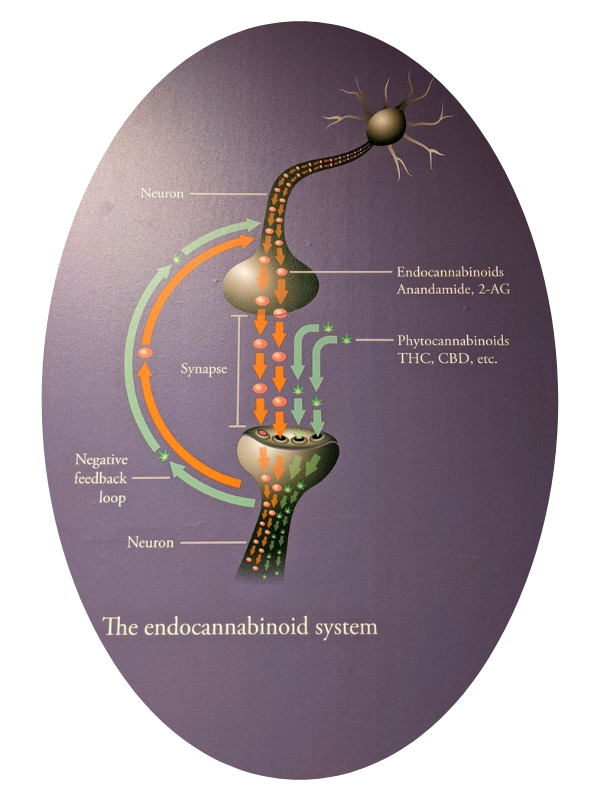Terpenes and Cannabinoids a scientific view on Hemp
In this article, we take a scientific look at terpenes and cannabinoids. These are the two main active ingredients in hemp. We’ll discuss what they are, how they work, and what benefits they offer.
Terpenes
Terpenes are aromatic compounds found in a variety of plants, including cannabis. These compounds can influence the effects of cannabis by modulating the activity of the endocannabinoid system. For example, some terpenes are known to increase alertness, while others can cause drowsiness.
Cannabis plants produce terpenes in order to attract pollinators and protect themselves from predators. Some terpenes are also known to have medicinal properties. For example, linalool is a type of terpene that is known to have sedative and anti-anxiety effects.

There are over 100 different types of terpenes that have been identified in the Cannabis plant. Terpenes are aromatic compounds that contribute to the unique smell and flavor of each Cannabis strain. They also play an important role in the therapeutic effects of Cannabis.

Cannabinoids
Cannabinoids are the active compounds in Cannabis that interact with our body’s endocannabinoid system. THC is the most well-known cannabinoid, but there are many others including CBD, CBG, CBC, and THCV. Each cannabinoid has its own unique set of effects.
Cannabinoids are thought to have many potential therapeutic uses, including pain relief, anxiety relief, and seizure control. Some research suggests that cannabinoids may also be effective in treating cancer.
The synergy between cannabinoids and terpenes is what gives Cannabis its unique therapeutic effects. This is why two strains of Cannabis with the same cannabinoid profile can produce different effects. The terpene profile is what makes each strain unique.
The Endocannabinoid System
The endocannabinoid system is a network of receptors and enzymes that are responsible for maintaining homeostasis in the body. This system is involved in a variety of physiological processes, including pain sensation, appetite, mood, and memory.
The endocannabinoid system gets its name from the plant Cannabis sativa, which is the source of the psychoactive compound THC. However, the endocannabinoid system is not limited to THC; it also includes other compounds found in cannabis, such as CBD and terpenes.
CBD and THC interact with the endocannabinoid system in different ways. THC binds directly to the cannabinoid receptors, while CBD does not. Instead, CBD influences the activity of the endocannabinoid system indirectly by inhibiting the enzymes that break down cannabinoids.
The interaction between cannabinoids and terpenes provides a scientific explanation for the different effects that cannabis can have on people.


Terpenes and Cannabinoids in Hemp
Cannabinoids are compounds found in the cannabis plant that interact with our body’s endocannabinoid system. This system is responsible for maintaining homeostasis, or balance, in the body. CBD and THC are the two most well-known cannabinoids, but there are over 100 different cannabinoids in the cannabis plant.
Terpenes are aromatic compounds found in plants that give them their unique smell. Hemp plants contain over 100 different terpenes. These terpenes work together with cannabinoids to produce what is known as the “entourage effect”. This synergistic relationship between cannabinoids and terpenes is thought to produce a more potent effect than either compound alone.
There is a lot of scientific research that still needs to be done on cannabinoids and terpenes, but what we do know is that they both play an important role in the overall effects of cannabis.
Effects of Terpenes and Cannabinoids
The potential effects of terpenes and cannabinoids have been the subject of much scientific research. Some studies suggest that these compounds may offer potential health benefits, while other studies have found no such effects. The conflicting results of these studies make it difficult to determine the true potential of these compounds.
One area where there is some agreement among researchers is the potential of terpenes and cannabinoids to affect the human body. These compounds interact with the body’s endocannabinoid system, which is responsible for regulating many important functions. This interaction can lead to changes in mood, pain perception, and inflammation.
Some research has suggested that terpenes and cannabinoids may offer potential benefits for certain health conditions. For example, some studies have found that these compounds may help to reduce inflammation and pain. Additionally, there is some evidence that these compounds could help to improve mood and sleep quality. However, more research is needed to confirm these potential effects.
It is important to remember that terpenes and cannabinoids are not currently approved by the FDA for any medical use. Therefore, it is important to speak with a healthcare provider before using these compounds for any purpose. Additionally, it is important to purchase these products from a reputable source.

The science of terpenes and cannabinoids is still relatively new, but it’s exciting to see the potential that these compounds have for improving our health and wellbeing. Hemp plants are a rich source of both terpenes and cannabinoids, and I believe that more research into their effects will uncover even more uses for them. I’m hopeful that we’ll continue to see more products on the market that contain these compounds, so that people can benefit from their therapeutic effects.









